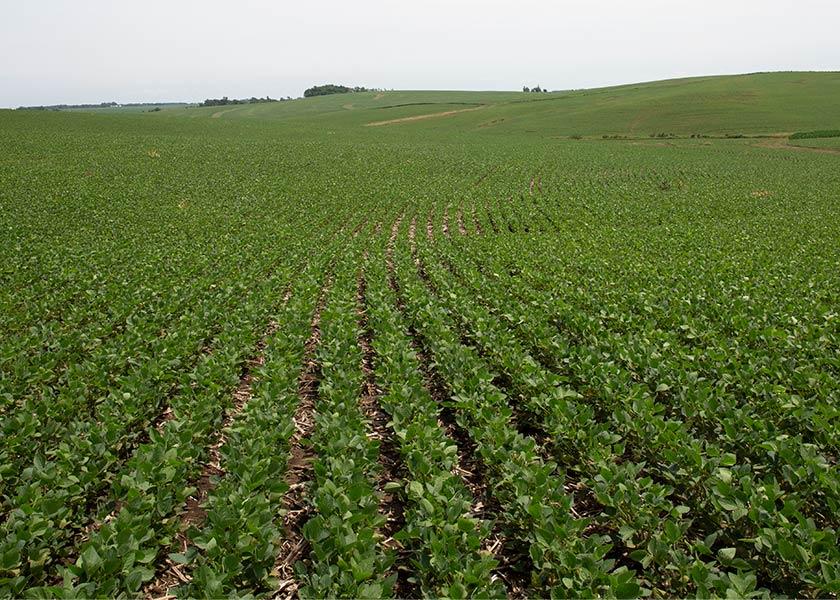Resistance Management: Choosing the Right Tools

Farmers hear it every year: Use different chemistries throughout the season to help avoid herbicide resistance. But resistance is the result of complex chemical, genetic, agronomic and environmental factors. Developing and executing a sound strategy that provides good weed control while minimizing the risk of resistance takes more than just using different brand names of herbicides. It takes a familiarity with the local weed populations and a solid understanding of how herbicides are classified.
“Farmers have many options when it comes to corn preemerge and preplant herbicides, including ALS inhibitors, HPPD inhibitors and PPO inhibitors,” says Tony Goede, Enlist® field specialist, Corteva Agriscience. “Knowing which herbicide groups you’re using in your PRE applications helps you to plan for a different group in your POST.”
Goede advises growers to carefully select traits and herbicides to arrive at a good balance between weed control effectiveness and resistance management.
“Enlist corn brings you four herbicide tolerances,” he says, “including glyphosate, glufosinate, 2,4-D choline, and the FOP chemistries such as Assure II herbicide. Having the ability to spray Enlist herbicides and Assure II herbicides postemergence in corn gives you those two extra levers to pull to help control tough broadleaves and resistant grasses.”
And while there’s no one-size-fits-all prescription for resistance management, a handful of best practices will fit nearly any farm in the Corn Belt.
Choose herbicide traits carefully and consider your rotations. If you plant a corn-soybean rotation, make sure you’re not inadvertently encouraging the development of resistant weed populations. Enlist E3® soybeans and Enlist® corn, for example, both offer tolerance to multiple herbicides. This not only gives you application flexibility, but also allows you to follow sound resistance management practices while using proven herbicide traits in back-to-back crops.
Site of action vs. mode of action: Know the difference and know what you’re applying. Mode of action (MOA) refers to how the herbicide does what it does, such as inhibiting cell division; site of action (SOA) refers to the actual place in the plant where the action occurs, such as a specific protein. Effectively managing resistance involves using a combination of herbicides with different SOA or herbicides with multiple MOA. Treat herbicides as a tool to be protected, and using multiple MOA will help protect these weed control tools.
Avoid letting resistant weeds go to seed. Remove them by hand if necessary or through application of a product known to control the resistant weed. To as much of an extent as possible, avoid bringing seeds from one field to another; wash or use compressed air on sprayers, tractors and other equipment before moving to a new field.
Cross-resistance can and does occur. Don’t assume that if a resistant population appears, you can simply apply another herbicide to control; that herbicide may or may not be effective, and if it’s not, you’re just throwing money at the problem. Work with your agronomist or crop protection sales representative to develop a sound strategy for controlling resistant weed populations.
Remember that resistance is proportional. The longer a resistant weed population is allowed to thrive, the greater the percentage of the total weed population in a given field will be resistant.
In the end, Goede says, the best resistance management plan is the one that uses a combination of herbicides to provide effective control, applying when weeds are small and actively growing and using full herbicide rates.
“Mixing up the different chemistries helps fight tough-to-control weeds,” Goede says, “and helps manage resistance throughout the entire season.”
Interested in learning more about managing resistance with the Enlist® weed control system? Watch the video How Multiple Modes of Action Keep Resistant Weeds in Check and contact your Corteva Agriscience representative.
™ ® Enlist, Enlist Duo, Enlist E3 and Enlist One are trademarks of Corteva Agriscience and its affiliated companies. ®-Assure II is a trademark of AMVAC Chemical Corporation. The transgenic soybean event in Enlist E3® soybeans is jointly developed and owned by Corteva Agriscience and M.S. Technologies L.L.C. Enlist Duo® and Enlist One® herbicides are not registered for sale or use in all states or counties. Contact your state pesticide regulatory agency to determine if a product is registered for sale or use in your area. Enlist Duo and Enlist One herbicides are the only 2,4-D products authorized for use with Enlist® crops. Consult Enlist® herbicide labels for weed species controlled. Always read and follow label directions. ©2024 Corteva. 019051 BR (03/24) CAAG4NLST067







